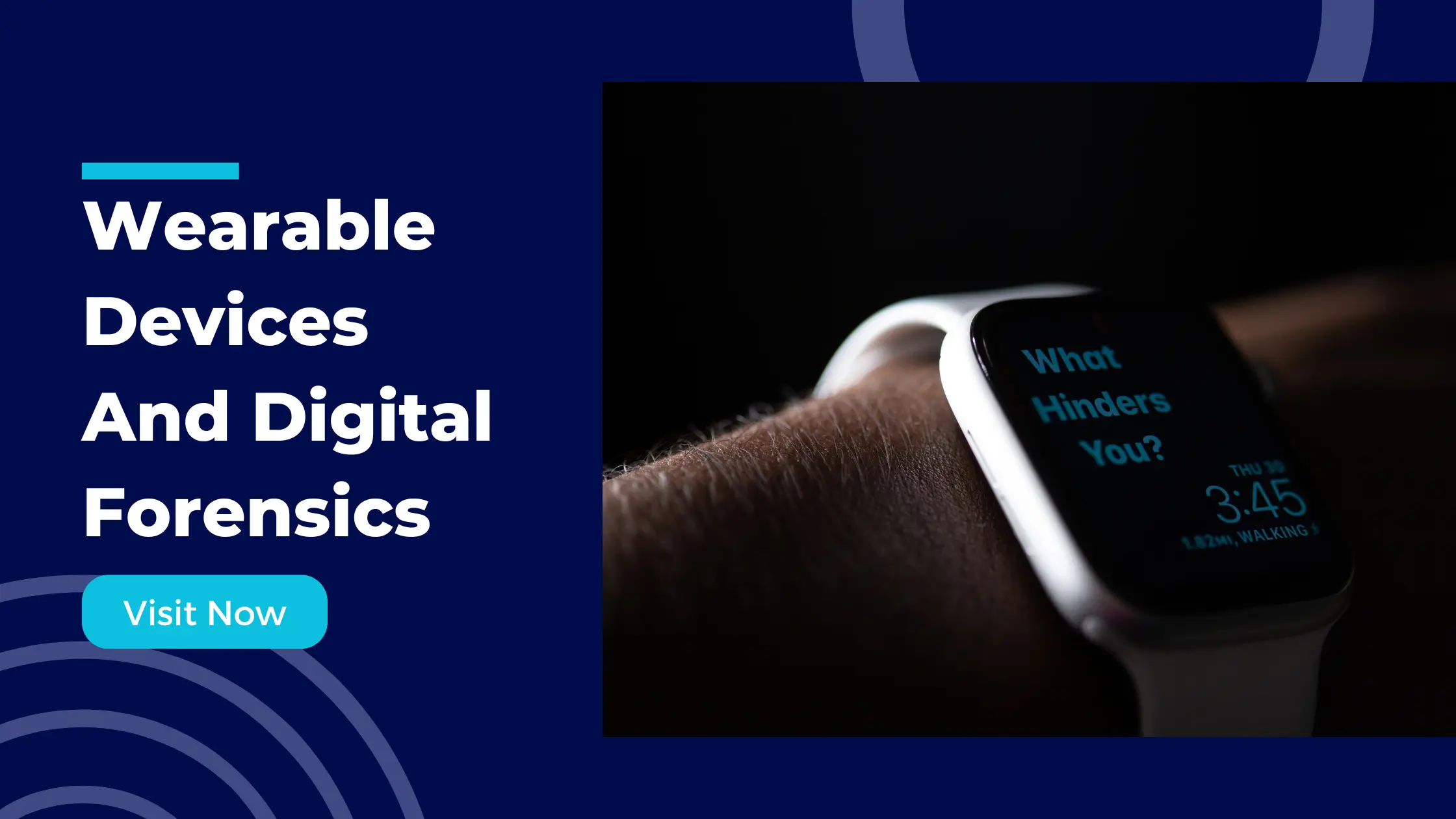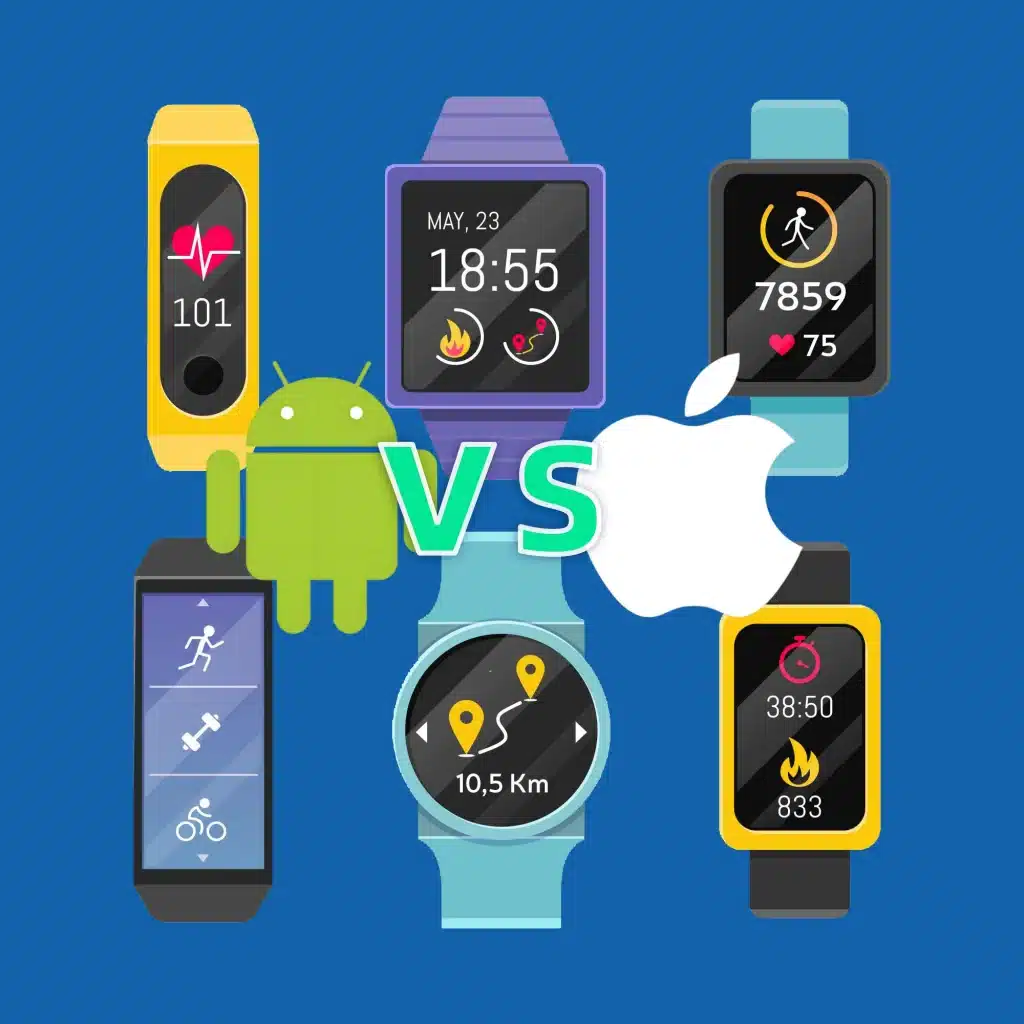Wearable device forensics is becoming an essential part of modern investigations as wearable technology becomes deeply embedded in everyday life. From smartwatches to fitness trackers, these devices constantly collect health, location, and activity data, providing valuable insights for wearable forensics and wearable technology forensics. Unlike traditional devices, wearable devices quietly gather real-time information that often remains untouched, making them critical sources in digital evidence collection. As fitness tracker forensics and smartwatch investigations continue to expand, understanding how to extract and analyze wearable data is crucial for law enforcement, forensic labs, and corporate investigators aiming to uncover the truth with precision.
Wearable Devices And Digital Forensics

-
Content
- The Wearable Devices Forensics in Digital Investigation
- The Available Data of Wearable Device Forensics
- The Potential Application of Wearable Device Data
- Protection the Data on Wearable Devices
-
Content
- The Wearable Devices Forensics in Digital Investigation
- The Available Data of Wearable Device Forensics
- The Potential Application of Wearable Device Data
- Protection the Data on Wearable Devices
The Wearable Devices Forensics in Digital Investigation
Wearable devices hold unique significance in digital forensics by capturing real-time, personal data that can fill critical gaps in investigations. Unlike smartphones or laptops, which users often lock or erase, wearable devices continuously collect information in the background, including heart rate, GPS location, sleep patterns, and activity levels. This makes wearable forensics a valuable tool for reconstructing timelines, verifying alibis, and analyzing behavioral patterns during criminal or civil investigations.
For example, a smartwatch can show when a user’s heart rate spiked during a critical moment, or a fitness tracker can confirm movement patterns that contradict a suspect’s statements. In missing person cases, location and movement data from wearable devices can help narrow down potential search areas. As wearable technology forensics continues to evolve, these devices provide raw, time-stamped evidence that supports digital investigations with precision and depth, empowering forensic labs and law enforcement agencies to uncover the truth efficiently.
The Main Operating Systems in Wearable Device Forensics
Android Wear OS and Apple WatchOS
Knowledge of operating systems used on wearable devices is critical in wearable device forensics since they dictate data storage types, extraction methods, and possibly limitations in analysis. Two operating systems are presently the dominant ones in wearable forensics:
- Android Wear OS
Wear OS, developed by Google, is widely used across various smartwatch brands, including Samsung, Fossil, and TicWatch. It integrates seamlessly with Android smartphones, providing features such as GPS tracking, heart rate monitoring, sleep tracking, and message notifications. For forensic professionals, Wear OS offers opportunities to extract sensor data, location history, and user activity logs, aiding in timeline reconstruction and location verification during investigations.
- Apple watchOS
Apple watchOS powers Apple Watch devices, deeply integrated within the Apple ecosystem. It collects a wide range of health and activity data, including heart rate, blood oxygen levels. Apple Watches often sync data with paired iPhones and iCloud, requiring forensic tools capable of extracting data from both the device and associated Apple accounts. For wearable technology forensics, watchOS provides high-quality, time-stamped health and activity data that can clarify user behavior during critical events.
The Available Data of Wearable Device Forensics
Wearable devices collect a variety of data that can significantly support digital forensic investigations. Understanding the types of data available in wearable device forensics helps investigators know what to target during acquisition and analysis, ensuring critical evidence is not overlooked.
- Location Information
Wearable devices often record GPS data, Wi-Fi connection history, Bluetooth proximity logs, and movement patterns. This location data helps investigators trace a user’s steps, confirm or dispute alibis, and build accurate timelines of a suspect’s or victim’s movements. In missing person investigations, wearable forensics can help narrow down potential locations based on last recorded coordinates and movement history. -
User Health and Activity Information
Wearable technology forensics enables the collection of health-related data, such as:
-
-
Heart rate and heart rate variability
-
Blood oxygen levels
-
Stress levels
-
ECG data
-
Sleep patterns (duration, quality, sleep stage data)
-
Step counts and movement intensity
-
Calorie burn estimates
-
Exercise session details (duration, distance, heart rate during workouts)
-
These health indicators can provide insight into a user’s physical state before, during, and after incidents, reveal stress patterns during disputes, or highlight irregularities matching critical timelines in an investigation.
- Communication Information
Many wearable devices display or log message notifications, call alerts, app notifications, and calendar reminders synced from paired smartphones. Even when a phone is turned off or erased, these devices may still store snippets of communications that can be valuable for verifying timelines and identifying key contacts in an investigation.
- Device Interaction and Usage Logs
Wearable devices often maintain logs of user interactions, such as:
-
Screen activation and touch activity logs
-
App usage history (health apps, navigation apps, messaging apps)
-
Device pairing and unpairing events
-
Charging and battery logs indicating device activity times
These logs can provide indirect confirmation of when a user was wearing the device or actively interacting with it, which can support or challenge statements during interviews.
The Potential Application of Wearable Device Data
Wearable device forensics offers a new layer of insight for various investigative scenarios, enabling law enforcement, forensic labs, and insurance investigators to uncover critical evidence that traditional sources may miss. By leveraging data from wearable devices, investigators can reconstruct timelines, verify movements, and analyze a user’s physical state during crucial moments, strengthening the evidence chain.
- Violent Crime Investigations
In cases of assault, homicide, or domestic violence, wearable forensics can provide valuable data such as heart rate spikes during a confrontation, activity changes indicating a struggle, or sudden movement detected by accelerometers. GPS location data and activity logs can confirm the suspect’s or victim’s whereabouts, offering a clearer reconstruction of the event timeline. For example, wearable technology forensics can reveal if a user was running, fell, or became immobile during the suspected time of an incident, supporting or challenging witness statements.
- Missing Persons Cases
Wearable devices frequently record the last known GPS coordinates and movement patterns of individuals. In missing person investigations, fitness tracker forensics and smartwatch location data can help narrow down search areas by showing where a person was last active, whether they were moving or stationary, and if there were any abnormal activity patterns before disappearance. This can significantly aid search and rescue operations by providing directionally accurate data to law enforcement teams.
- Insurance Investigations
Wearable technology forensics plays a crucial role in validating or disputing claims in insurance cases. For example, health data such as heart rate, step count, and activity logs can verify the physical condition of claimants, identify fraudulent claims, or confirm that an activity was performed as described. If a claim involves an accident, wearable device data can show whether the user was active, stationary, or involved in a high-impact movement during the reported incident time.
Protection the Data on Wearable Devices
While wearable devices provide critical data for wearable device forensics, their connectivity to smartphones introduces potential security and data integrity risks that investigators must consider. Most wearable devices are paired with smartphones via Bluetooth and often sync data to cloud services, meaning the data exists across multiple platforms and can be exposed if not handled properly.
Data syncing between wearables and smartphones can create vulnerabilities, such as unauthorized access if a paired phone is compromised, or partial data overwriting during synchronization. Wearables often lack advanced encryption, making them susceptible to tampering if physical access is gained before evidence preservation. Additionally, wearable devices may store sensitive health, location, and communication data locally, which can be modified or deleted if the device is not promptly secured.


